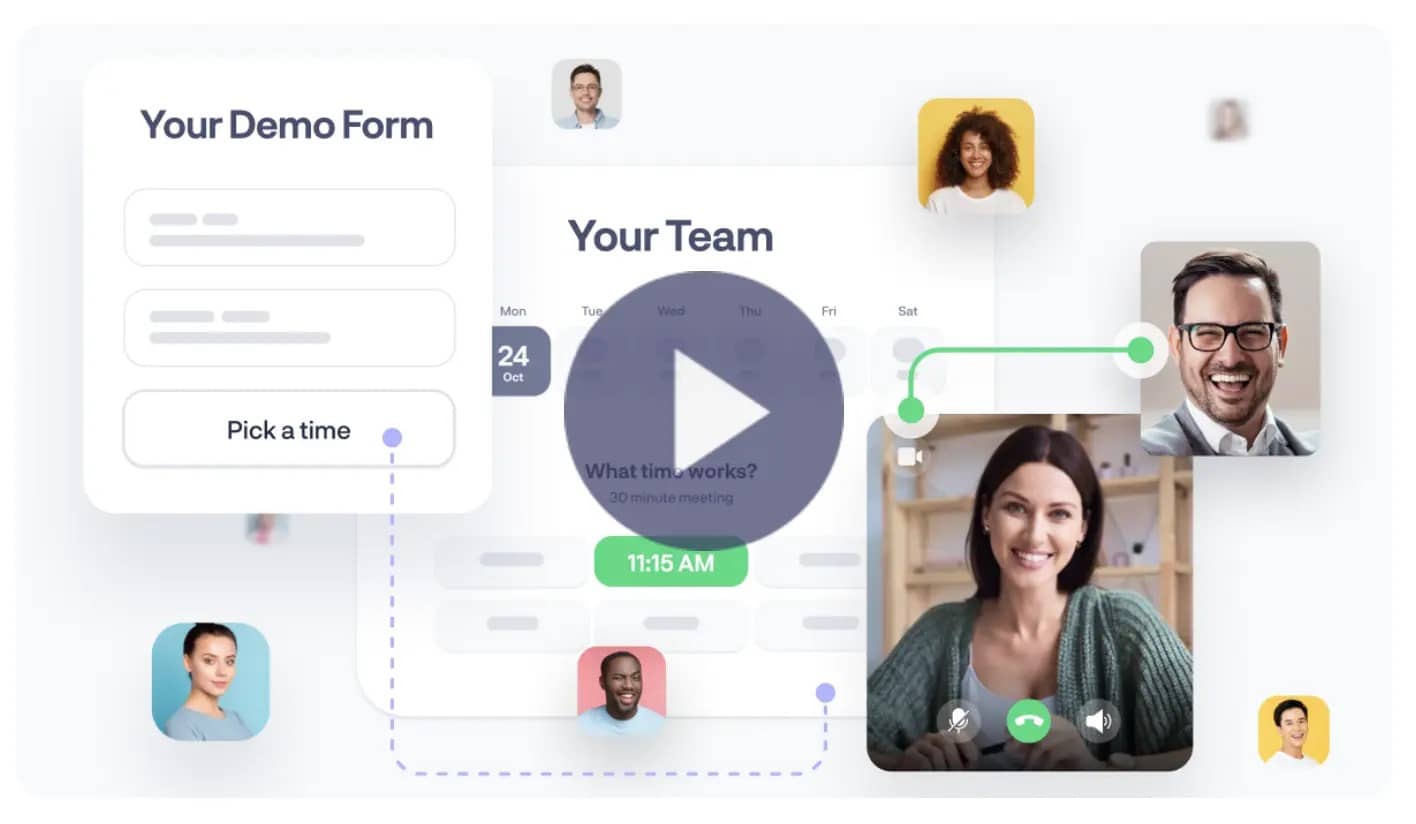Last Updated on January 10, 2025 by Admin
Starting a website and unsure how to fill it with great content? Don’t worry, it happens to everyone at first. Creating content that grabs attention and ranks well in search engines can seem tough, but it’s totally doable.
Hang in there! I’ve got some straightforward tips to help you write content that’s not just good but great—boosting both your site’s look and its SEO. So, let’s dive right in!
Awesome Content Writing Tips for Your Website
Here are the top content-writing tips that will ensure your website gets the attention it deserves:
1. Know Your Target Audience
Creating engaging content starts with a simple yet often overlooked question: Who am I writing for? Before you dive into writing, pause and picture your audience. For example, if you’re crafting a website for a small bakery, your primary audience might be local customers looking for freshly baked goods. But don’t forget the broader crowd—the secondary audience. These could be event planners, cafes looking for suppliers, and even food bloggers who might feature your bakery.
Think about what these people are curious about. What questions might they have? Where do they hang out online? Understanding their needs and online behaviors helps ensure your content resonates and reaches them where they are.
And remember, no matter how insightful your content is, it needs to be discoverable. This is where SEO comes into play. People often find content through search engines, social media, or links from other sites.
So, think about what terms your audience might use in a Google search and weave these keywords naturally into your titles and subheadings. This strategy boosts your visibility and makes sure your content doesn’t just sit there unnoticed. Keep it friendly and accessible, just like you’re explaining it over coffee with a friend.
2. Follow the ‘Inverted Pyramid’ Model
When people visit your website, they make up their minds pretty quickly. Organize your content like you’re telling the most important part of a story to capture their interest from the get-go. This method, called the “inverted pyramid” style, means you put the crucial details right at the top.
For instance, if you’re setting up a page for a conference, start with the essentials: the event’s theme, date, and where it’s happening. Visitors can learn about the speakers and their topics as they scroll down. Then, towards the bottom, you can tuck in additional details like the history of the conference or links to further resources.
This setup ensures your visitors get the main points immediately and can choose to dive deeper if something catches their eye.
3. Research Your Competitor’s Content
Checking out what your competitors are up to can give you some great insights into what’s working in your industry. Take a peek at their websites and note the kind of content they’re putting out there. Are they into quick how-to guides, in-depth thought leadership pieces, or maybe fun listicles?
Here’s how you can analyze it:
- Content Formats: What’s their go-to style? Observing whether they favor videos, infographics, or text articles can spark ideas for your own content approach.
- Content Topics: What subjects are they focusing on? Identify hot topics or recurring themes to see what captures the audience’s interest. Maybe you can offer a fresh take on these topics.
- Structure: How do they organize their content? Note if they keep things concise or if they prefer detailed discussions. Do they use bullet points or subheadings to break up text?
- Tone and Style: What’s the vibe like? Is it formal or relaxed? This will give you clues about audience expectations and how you might want to present your own content.
- Engagement: Check out how people interact with their content. Are readers commenting, sharing, and liking posts? This feedback can guide you on what resonates with the audience.
Reviewing your competitors’ content helps identify gaps in your own strategy and also inspires new ideas for engaging your audience.
4. Make Sure Your Copy is Readable
SEO content extends beyond mere keyword insertion. It involves crafting content that is optimized for search engines, compelling, and useful for your readers.
Your content should be easy to read and understand. Use straightforward language and short sentences. Avoid using complicated jargon that might confuse readers.
Use headings, subheadings, and bullet points to break up text and make your content easy to scan. This helps readers find information quickly and improves the overall user experience.
Ask questions, use real-life examples, and inject a bit of personality into your writing to keep it lively. Ensure your content flows logically from one section to the next. Transition smoothly between paragraphs and ideas to maintain reader engagement and understanding.
After writing, take a step back and review your content from a reader’s perspective. Is it clear? Does it answer the questions a reader might have? Edit to improve clarity and engagement.
5. Talk to Readers as You Would to a Friend
Creating a connection with your audience is key to building trust and loyalty. Here’s how you can make your website content feel more personal and engaging:
- Use Conversational Language: Write as if you’re speaking directly to your reader. This approach makes your content more relatable and easier to understand. For instance, say, “Let’s explore this idea together,” rather than “The idea will now be explored.”
- Incorporate Stories and Examples: Share anecdotes or customer stories to illustrate your points. This method not only makes your content more interesting but also shows how your products or services solve real-world problems. For example, “When Emily tried our product, she found that…”
- Ask Questions: Engage your readers by asking them questions. This invites them to think and interact with your content. Use phrases like, “Have you ever wondered…?” or “What do you think about…?”
- Highlight Community Involvement: Mention your involvement in the community or industry. This shows that you’re active and committed, enhancing your credibility. Say, “We participate in community events to learn more about your needs.”
6. Optimize Your Content for Featured Snippets
Featured snippets on Google provide the most direct answers to user queries. For example, for the query, “How do you write a blog post,” a featured snippet might display the most straightforward instructions.
To qualify for a featured snippet, responses should be thorough yet concise.
If the query is “How to write a blog post,” using “How to Write a Blog Post” as an H1 or H2 header, followed by numbered or bulleted steps, can help. The answer should also incorporate part of the query, beginning the description with: “To write a blog post, follow these steps…”
Each instruction should begin with a clear, actionable verb, such as “choose” and “outline.”
Ensure the explanation does not exceed 58 words for queries needing a definition.
7. Don’t Forget to Add Visuals
Research shows people often remember visuals better than text. Include visuals like infographics, graphs, and videos in your blog. These make your content easier to understand and more memorable. For example, an infographic can simplify complex topics. A graph can clearly display data trends.
A video can demonstrate how a product works hands-on. Consider how Chili Piper uses a video on their homepage. It highlights their product’s advantages. This visual not only grabs attention but also encourages purchases. Every blogger should consider using visuals to enhance their content’s effectiveness.

8. Linking to Other Posts on Your Site
Linking to other parts of your site isn’t just good for SEO—it makes your site more enjoyable for your readers, too. It’s like giving them a map to more great stuff they might like, which keeps them hanging around longer. That’s good for your site’s stats, and it makes it more likely they’ll end up doing something valuable, like signing up or making a purchase.
Always use natural-sounding language for your links. Instead of vague calls to action like “click here,” try something that tells them exactly what they’re going to get, like “check out our beginner’s guide to digital marketing.”
And remember, link wisely. Add links that make sense and add value to the topic you’re discussing. This way, every link enhances your content and feels like a natural part of the conversation.
9. Add a FAQ Section to Your Blog
Incorporating a FAQ section into your blog can really boost its visibility and value. Search engines like Google love to pull direct answers from sites and feature them prominently. This makes FAQs a powerful tool for getting your content to the top of search results.
To make the most of this, format your FAQs clearly by stating questions directly and answering them right below. Keep your answers brief and to the point. Ensure they’re filled with useful information. Consider the keywords people might use in searches. Weave these keywords into your FAQs. This strategy helps your blog appear in search results. Refreshing old blog posts with new FAQs is smart. It gives them a second life and extends their reach. You don’t have to start from scratch. This approach keeps your content fresh and relevant. It also improves your site’s overall SEO.
10. Regularly Update Your Blog
Keeping your content fresh and up-to-date is essential in maintaining its relevance and value. As the digital landscape shifts, your content should evolve to match the latest trends and information. Here’s how you can keep your blog content current:
- Review and Update Information: Regularly scan your posts for outdated facts or figures, outdated product mentions, or any information that no longer holds true. Update these elements with the latest data and insights to keep your content accurate.
- Expand Existing Content: If new developments or additional insights have emerged related to your topics, consider expanding your existing articles. Adding new sections can provide more depth and fresh perspectives to older posts.
- Refresh Calls to Action (CTAs): CTAs are crucial for guiding your readers to take action. If your current CTAs aren’t yielding results, try rephrasing, redesigning, or moving them to more strategic locations within your posts to increase their effectiveness.
Wrapping Up!
Website content writing is key for online marketing success. It largely determines any online business’s performance. Good content should inform, engage, and convert visitors. Looking to enhance your site’s content? Consider consulting with AlgoSaga experts. They excel in creating high-quality, engaging content with their lead generating content writing services. This content resonates with your audience and boosts your search engine rankings.
